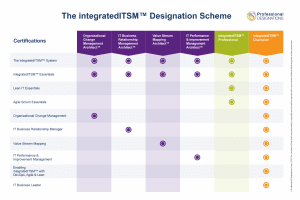In the world of service management, Continual Improvement (CI) is often misunderstood. It’s not just a process or a checklist — it’s a mindset. A philosophy. A way of working that should be woven into the very fabric of how an organization operates.
Let’s explore what CI really is, how it works, and how to make it thrive in your organization.
🔍 What Is Continual Improvement?
Continual Improvement is the belief that perfection is unattainable, but progress is always possible. It’s about constantly asking:
“Is this the best we can do?”
And when the answer is “no” (as it often is), CI helps guide the changes needed to get closer to the ideal. But CI isn’t just about tweaking processes. It’s about improving:
- Customer experience
- Internal operations
- Supplier relationships
- Tools and technologies
- Even the CI process itself
It’s an holistic approach that touches every part of the service lifecycle.
🎯 What Does CI Actually Do?
CI challenges the status quo. It:
- Identifies areas for improvement
- Evaluates the cost vs. value of change
- Guides changes through to completion
- Reflects on outcomes and adjusts accordingly
It’s both forward-looking and introspective — constantly refining how services are delivered and how the organization supports that delivery.
⏱️ When Should CI Happen?
A better question is: When shouldn’t it?
CI should be active at every stage of the service lifecycle—from strategic planning to daily operations. It’s not a quarterly review or an annual initiative. It’s a continuous loop of observation, evaluation, and action.
🧭 How Should CI Work?
The CI journey follows a logical path:
-
Define the Vision Know where you’re going. Set clear goals and success criteria.
-
Establish a Baseline Understand where you are now. Use metrics that align with your goals.
-
Set Targets Decide what you want to improve and by how much. Include metrics you want to protect (e.g., “no drop in customer satisfaction”).
-
Plan the Actions Only now do you ask: “How do we get there?” Choose actions that offer the best value for effort.
-
Execute and Monitor Implement the changes. Track progress against your baseline and targets.
-
Evaluate and Decide Did it work? What changed? What didn’t? Decide whether to continue, adjust, or pivot.
-
Reassess the Vision Has the goal changed? Has the environment shifted? Start the cycle again.
🌟 What Are the Benefits of CI?
At a strategic level, CI ensures that services align with business goals. Whether the aim is market expansion, cost reduction, or risk mitigation, CI helps services evolve to support those aims.
At a tactical level, CI helps:
- Reduce effort while maintaining or improving outcomes
- Increase customer satisfaction
- Lower service delivery risks
- Optimize costs
The benefits are unique to each organization—but they’re always valuable.
🧠 How Do You Achieve These Benefits?
- The Methodology Follow the structured CI approach outlined above.
- The Mindset CI must be part of the culture. Everyone—from leadership to frontline staff—should see improvement as part of their daily role.
⚠️ Common Mistakes in CI
Here are some pitfalls to avoid:
-
Treating CI as a one-off event CI must be continual—not a quarterly initiative.
-
Starting too late CI should be embedded from the beginning, not added as an afterthought.
-
Overcomplicating the process Bureaucracy kills momentum. Keep it simple and accessible.
-
Lack of communication CI must be transparent. Share plans, progress, and outcomes widely.
-
Skipping the baseline Without a starting point, you can’t measure improvement.
-
Ignoring cost-benefit analysis Not every improvement is worth the effort. Be strategic.
-
Reinventing the wheel Many CI activities already exist in other departments. Leverage them.
💬 Final Thoughts
Continual Improvement is not a luxury—it’s a necessity. In a world of constant change, organizations that embed CI into their DNA are the ones that thrive.
It’s not about chasing perfection. It’s about getting better, every day.










